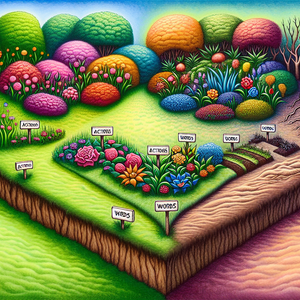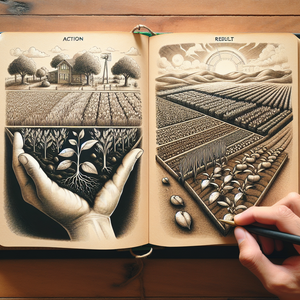Secrets of the Set Designers Crafting Cinematic Worlds

Set designers, often referred to as production designers, are the architects of the film world. Their primary responsibility is to create settings that reflect the narrative’s tone, era, and emotional undertones. A meticulously crafted set can evoke a wide range of feelings—nostalgia, fear, excitement, or tranquility—enhancing the audience's experience and connection to the story.
Creative Processes Behind Set Design
The creative process of set designers is multi-faceted and involves several stages, each requiring a unique skill set. Initially, designers create concept art and sketches to visualize the set. This phase often includes the development of mood boards that compile various elements such as color palettes, textures, and architectural styles. For example, in a film set in the 1920s, a designer might incorporate Art Deco elements, utilizing geometric shapes and bold colors to capture the era’s essence.
Challenges Faced by Set Designers
Set designers encounter numerous challenges throughout the production process, with budget and time constraints often at the forefront. Film productions typically operate within tight budgets, compelling designers to devise innovative solutions that yield stunning sets without exceeding financial limits. This may involve repurposing materials or designing multi-functional elements that can serve various scenes.
The Impact of Set Design on Storytelling
The influence of set design on storytelling is profound and multifaceted. Sets serve as the backdrop for characters’ journeys and play a crucial role in establishing mood and atmosphere. For example, the stark, cold interiors of a dystopian film can amplify feelings of despair and isolation, while a vibrant, lush setting in a romantic comedy can enhance feelings of joy and warmth.
Set designers are the unsung heroes of the filmmaking process, wielding the power to shape narratives through their creative environments. Their work transcends mere aesthetics; it influences how stories are told and felt by audiences around the world. By exploring their creative processes, the challenges they face, and their profound impact on storytelling, we gain a deeper appreciation for the artistry and craftsmanship that bring cinematic worlds to life. As viewers, the next time we are captivated by a film's setting, we should remember the dedicated set designers who turn imaginative concepts into tangible realities, crafting cinematic experiences that resonate with us long after the credits roll. Their artistry serves as a reminder that behind every great film, there exists a team of skilled individuals who have transformed mere scripts into vivid, unforgettable worlds.
Production Designer
Warner Bros., Universal Pictures
Core Responsibilities
Develop and oversee the visual concept of a film, television show, or theater production, ensuring it aligns with the director's vision.
Collaborate with set designers, costume designers, and other creative personnel to create a cohesive world that enhances storytelling.
Conduct research on historical accuracy and relevant cultural elements to inform design choices.
Required Skills
Strong artistic vision and proficiency in design software (e.g., AutoCAD, SketchUp).
Proven experience in production design, with a portfolio showcasing previous work in film or television.
Excellent communication and collaboration skills to work effectively within a creative team.
Set Designer
NBC, HBO
Core Responsibilities
Create detailed sketches and models of sets, translating the director's vision into feasible designs.
Collaborate with construction teams to oversee the building and installation of sets, ensuring adherence to design specifications.
Modify designs based on feedback and practical considerations, such as budget and time constraints.
Required Skills
Proficiency in drafting and design software, with a strong understanding of spatial design and architectural principles.
Experience in theatrical or film set design, with a keen eye for color, texture, and detail.
Ability to manage multiple projects simultaneously while meeting tight deadlines.
Art Director
Major production companies, advertising agencies
Core Responsibilities
Lead the visual aspects of a production, ensuring that the overall aesthetic aligns with the narrative and director's vision.
Supervise the set design team, guiding the creation of props, decorations, and other visual elements.
Coordinate with other departments (e.g., lighting, costume design) to maintain a consistent visual style throughout the production.
Required Skills
Strong leadership and project management skills, with a background in fine arts or design.
Extensive knowledge of design principles and trends within the film and television industry.
Ability to work under pressure and adapt to rapidly changing production needs.
Props Master
Film studios, theater companies
Core Responsibilities
Source, design, and manage all props used in a production, ensuring they are authentic and suitable for the storyline.
Collaborate with the production designer and director to create a visual narrative that enhances character development and setting.
Organize and maintain the prop department, overseeing inventory and budget management.
Required Skills
Strong organizational skills and attention to detail, with a creative eye for sourcing or creating unique props.
Experience in theater or film production, with a background in art or design preferred.
Ability to work collaboratively with various departments to achieve a cohesive production.
Graphic Designer for Film and Television
Design agencies, film studios
Core Responsibilities
Design visual graphics for film and television productions, including title sequences, credits, and promotional materials.
Collaborate with the production team to ensure graphics align with the overall visual style of the project.
Create storyboards and conceptual art to communicate ideas effectively during the pre-production phase.
Required Skills
Proficiency in graphic design software (e.g., Adobe Creative Suite) and a strong portfolio demonstrating previous work in entertainment.
Understanding of visual storytelling and how graphics can enhance narrative engagement.
Ability to work under tight deadlines and adapt to rapid changes in project scope.


